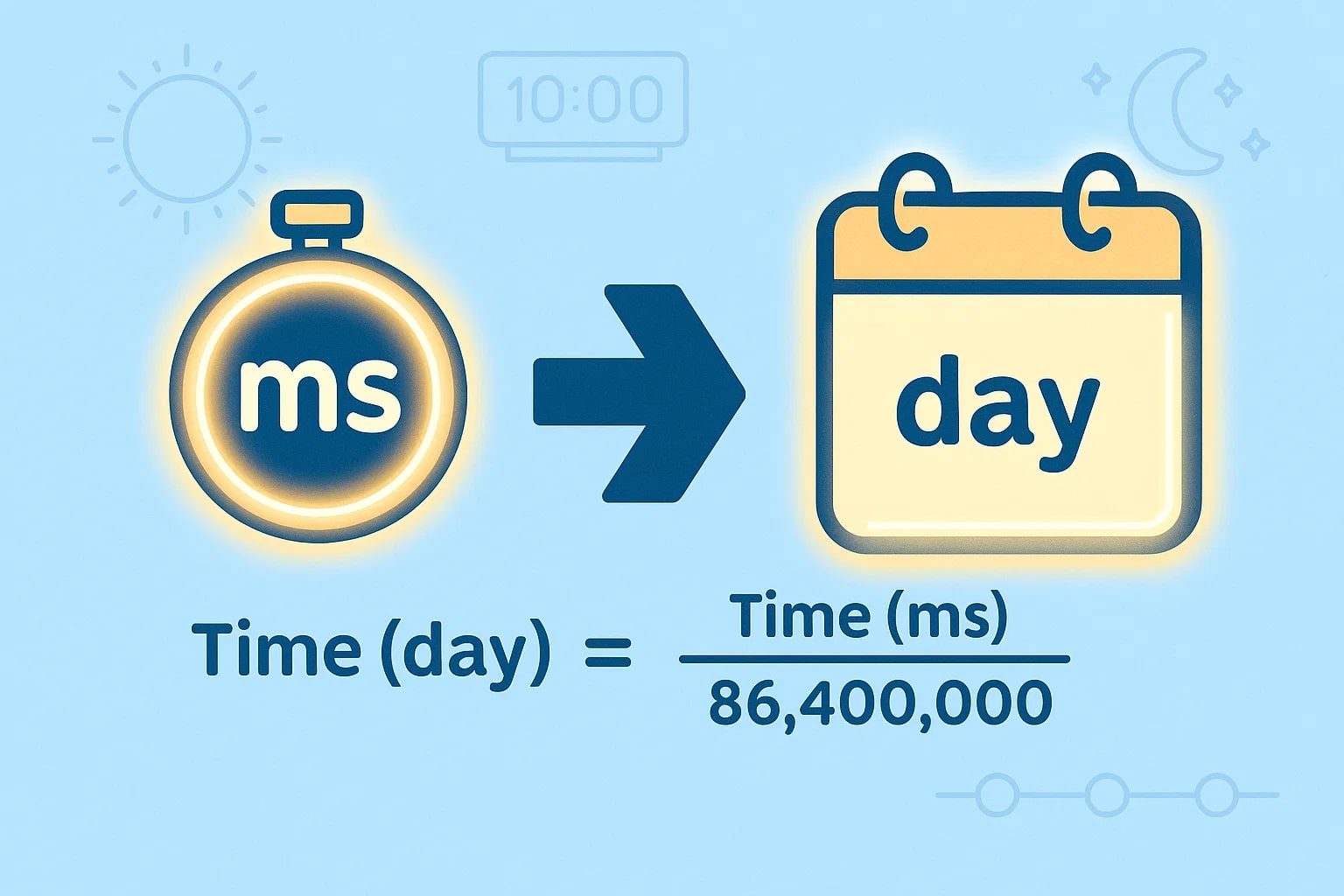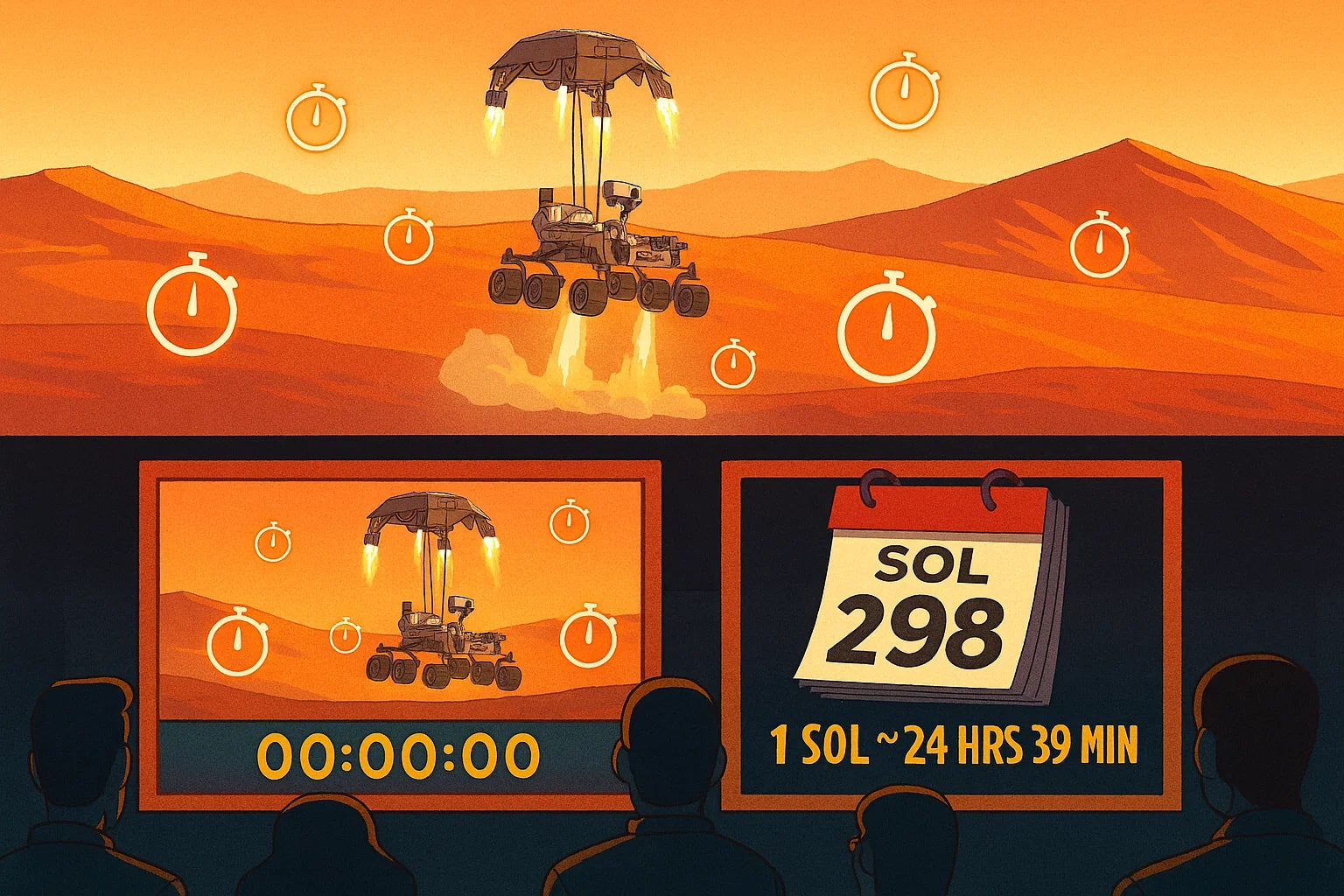Millisecond to day - How to convert ms to day
Sometimes, you need to make sense of time in extremes — from the blink-fast world of milliseconds to the steady rhythm of days. The ability to convert milliseconds to days is more than just math; it bridges tiny technical measurements and the bigger picture we live by.
What is a Millisecond (ms)?
A millisecond is 1⁄1,000 of a second. It’s a staple unit in technology, sports, and science when precise measurements are critical. In a single millisecond, your computer can process thousands of operations, or a Formula 1 car can travel several centimeters at top speed.
What is a Day?
A day is a familiar, human-friendly unit of time: 24 hours, or 86,400 seconds. If we go even smaller, that’s 86,400,000 milliseconds in a day. Days help us structure work schedules, travel plans, and even scientific experiments on Earth and beyond.
Conversion Formula — ms to day
To convert ms to day, divide the number of milliseconds by 86,400,000.
Time (day) = Time (ms) ÷ 86 400 000
Example:
172,800,000 ms ÷ 86,400,000 = 2 days
So, every 1 day equals 86,400,000 milliseconds — a number that might look huge, but it’s the same 24 hours we’re all used to.
If you want to skip the manual math, our Time Converter or Conversion Tools can instantly give you the result — and they handle plenty of other time units too.

Do you know?
- Millisecond fact: In competitive eSports, even a 5 ms difference in server response can change the outcome of a match — that’s faster than a camera flash.
- Day fact: A “day” on Venus lasts 243 Earth days, making its daytime longer than its year. Imagine waiting that long for the sun to set.
Mission Control: Timing Between Milliseconds and Days
In 2012, NASA’s Curiosity rover touched down on Mars, kicking off a mission that would blend micro precision with long-term planning. Engineers on Earth had to send commands that would arrive minutes later, yet those commands triggered millisecond-level actions — like deploying sensors or snapping a photo at just the right instant.
Mars has its own day, called a “sol,” which lasts about 24 hours and 39 minutes. Over time, that extra 39 minutes per sol adds up, forcing the mission team to constantly shift their work schedule. Millisecond-level events kept the rover safe and functional, while the day-long planning cycles dictated when experiments could happen.

The success of Curiosity wasn’t just about big-picture strategy — it relied on the seamless link between tiny intervals and the long stretches we measure our lives by.
From Space Missions to Your Calendar
Whether you’re managing a space rover or planning a software rollout, being able to convert milliseconds to days helps connect immediate actions with long-term results. In tech, system uptime is often logged in milliseconds, but project managers may need that data in days to understand trends. In everyday life, tracking small intervals over days can help with everything from training routines to event scheduling.
Time conversions aren’t just for scientists and engineers — they’re for anyone who needs to see the big picture without losing sight of the details. With the right tools, you can easily move between the two and keep your timing precise, no matter the scale.

